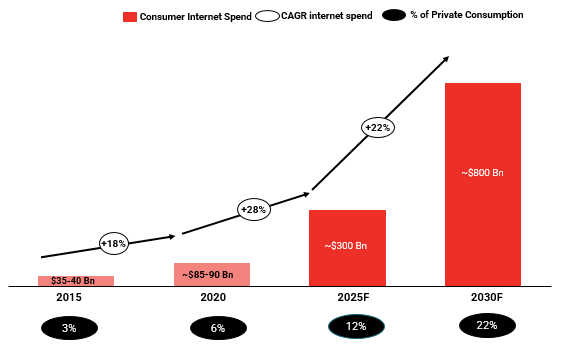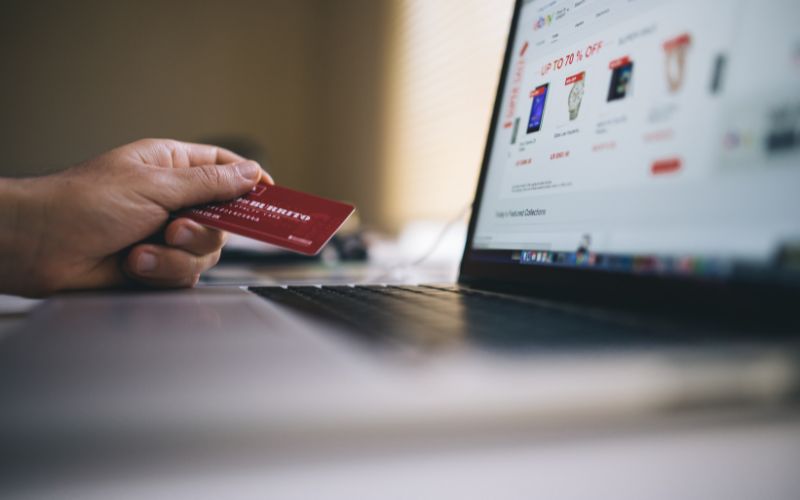With a 40% contribution to the total ad expenditure of ₹1 lakh crore across all media, digital is all set to overtake TV as the largest advertising medium in 2022. Reports also suggest digital ads for eCommerce businesses is the second-largest contributor to India’s total digital expenditure.
Why and how did this happen? Let’s find out.
eCommerce as the second-largest contributor to digital ad spend in India
The pandemic offered fertile ground for eCommerce to bloom globally. And as the market for eCommerce grew, so did the digital ad expenditure (AdEx).
The share of eCommerce in India’s total Adex grew by about 5% from 8.5% in 2020 to 13% in 2021. It is currently the second-largest contributor to the growing digital AdEx after the FMCG sector.
As shoppers and sellers both went online, there was a significant shift in priorities for advertisers. Between 2019 to 2021, the ad expenditure for the online retail sector grew by 156%.

RedSeer Consulting reported that the eCommerce market in India is expected to reach $350 billion by 2030. The firm also projects that India will soon overtake eCommerce markets like the United Kingdom or South Korea to become the third-largest market globally within the next 10 years.
Confirming that India’s digital AdEx will continue to see immense growth.
“High-speed Internet has boosted the digital ecosystem, unlocking the limitless potential of the eCommerce sector in India that is currently valued at over $100 billion. The government impetus, investments in technology infrastructure and foreign investment supporting policies are also leading to an increase in the number of brands looking to grow their business online.” – Navin Joshua, Founder & Director, GreenHonchos
Related read: What To Sell Online in India: Trending List of Products 2022
Growth of DTC brands in the country
eCommerce is not a new phenomenon. However, the pandemic showed consumers and sellers how beneficial eCommerce could be in developing a pan-India customer base.
As customers got comfortable with the idea of transacting and buying products online, there was no going back. This gave confidence to independent sellers who wanted to build an online business but did not want the hassles of dealing with eCommerce marketplace mediators.
Several factors like government policies, infrastructural development, cheap internet and changing consumer preferences also led to the growth of hyper-local eCommerce adoption.
You will now probably be able to find and order from your local chemist or grocery store online.
The potential of promoting their products using hyperlocal and personalised content has encouraged independent sellers to start selling online.
This along with the rising customer expectations has led to an ever-increasing digital ad spend in India.

Related read: How to start an eCommerce business in 8 steps: From 0 to launch
Digital ads for eCommerce businesses directly fueled by social commerce
The rising trend of DTC commerce has confirmed two things:
- People want personalised shopping experiences
- Consumers discover brands mostly on social media
With 700 million people using social media in India, it seems like an obvious choice for advertisers.
Social commerce influences the engagement that a customer does with the brand. Customer preferences are largely based on community engagement and influencer preferences.
This gives brands an opportunity to use engaging content, influencer marketing and targeted marketing to retain customers.
Brands can use social media platforms to build stories and narratives. The essence is that – customers will come for the product but stay for the experience. Evolving consumer preferences have paved the way for social commerce to serve the next 500 million shoppers in India.
Cheap internet, vernacular language options, a growing network of transport and government support have all been conducive to eCommerce beyond urban areas. In tier 2 and tier 3 cities, product and brand discovery has largely happened on social media platforms.
Those new to eCommerce prefer buying and selling online on social media platforms because of familiarity and access to existing local communities.
The upward curve of eCommerce adoption in these cities has hence also had an impact on the digital AdEx in India.
Related read: Free Instagram course for DTC brands and small businesses
Get started with digital ads for your eCommerce business
As the DTC market expands, so does competition. And without digital ads for eCommerce businesses, the chances of getting discovered are pretty slim.
There are multiple inexpensive ways of ensuring more customers come and visit your online store. But, you may need to go that extra mile and opt for paid ads if you want to scale your DTC brand.
Watch our recent webinar with Adyogi, a SAAS based performance marketing tool that helps you run ads on social media and search engines.
We discuss the basics of digital marketing and give you the ultimate checklist that every startup needs.
With our online store, you can link your social media accounts efficiently and inexpensively. Share your product catalogues on Google and Facebook and run ads without hassles.
Haven’t started yet? What are you waiting for? Create your online store for free or upgrade to our premium plans for just ₹10/day!

